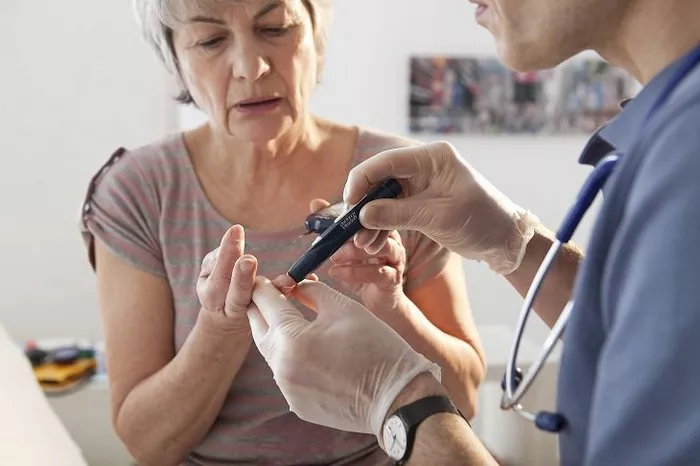Type 2 diabetes is a chronic condition characterized by insulin resistance and high blood sugar levels. Managing this condition involves a multifaceted approach that includes diet, medication, and physical activity. Exercise, in particular, plays a crucial role in controlling blood glucose levels, improving insulin sensitivity, and enhancing overall health. This article explores the types of exercise that are beneficial for individuals with type 2 diabetes, the physiological mechanisms behind their benefits, and practical tips for integrating physical activity into daily life.
The Benefits of Exercise for Type 2 Diabetes
Regular physical activity offers numerous advantages for individuals with type 2 diabetes. These benefits extend beyond blood sugar control and include improvements in cardiovascular health, weight management, mental well-being, and overall quality of life. Here are some key benefits:
- Improved Insulin Sensitivity: Exercise increases the body’s sensitivity to insulin, which helps lower blood sugar levels. This effect can last for hours or even days after the activity.
- Lower Blood Glucose Levels: Physical activity helps muscles use glucose for energy, which reduces the amount of glucose in the bloodstream.
- Weight Management: Regular exercise, combined with a healthy diet, can help achieve and maintain a healthy weight, reducing the burden on the body’s insulin production and effectiveness.
- Cardiovascular Health: Individuals with type 2 diabetes are at an increased risk of cardiovascular diseases. Exercise helps improve heart health by lowering blood pressure, improving cholesterol levels, and enhancing overall cardiovascular function.
- Mental Health Benefits: Physical activity is known to reduce stress, anxiety, and depression, which are common among individuals with chronic conditions like diabetes.
- Enhanced Muscle Strength and Flexibility: Exercise helps build and maintain muscle mass, which is important for overall metabolic health and physical function.
Types of Exercise for Type 2 Diabetes
There are several types of exercise that are beneficial for individuals with type 2 diabetes. Each type offers unique advantages, and a combination of these exercises can provide comprehensive health benefits.
1. Aerobic Exercise
Aerobic exercises, also known as cardiovascular exercises, are activities that increase the heart rate and breathing. These exercises are effective in improving cardiovascular health and burning calories. Common examples include:
- Walking: A simple, low-impact activity that can be done anywhere. It is easy to start and gradually increase in intensity.
- Running or Jogging: More intense than walking, running and jogging provide greater cardiovascular benefits and calorie burning.
- Cycling: Both outdoor and stationary cycling are excellent for cardiovascular fitness and leg strength.
- Swimming: A low-impact, full-body workout that is easy on the joints and highly effective for cardiovascular health.
- Dancing: A fun way to get moving, dancing can be done alone or in a group and provides both aerobic and mental health benefits.
Physiological Mechanisms: Aerobic exercise helps the body use insulin more efficiently, which can lower blood glucose levels. It also helps reduce body fat, particularly visceral fat, which is linked to insulin resistance.
Recommended Frequency and Duration: The American Diabetes Association (ADA) recommends at least 150 minutes of moderate-intensity aerobic exercise per week, spread over at least three days, with no more than two consecutive days without exercise.
2. Resistance Training
Resistance training, also known as strength training or weight lifting, involves exercises that improve muscle strength and endurance. This type of exercise is beneficial for building and maintaining muscle mass, which is important for overall metabolic health.
- Free Weights: Dumbbells, barbells, and kettlebells can be used for a variety of strength exercises.
- Resistance Bands: These provide resistance during exercises and are versatile and portable.
- Bodyweight Exercises: Push-ups, squats, and lunges use the body’s own weight as resistance.
- Weight Machines: Found in gyms, these machines target specific muscle groups and can be adjusted for different resistance levels.
Physiological Mechanisms: Resistance training increases muscle mass, which enhances the body’s ability to use glucose. More muscle means more storage for glucose and improved insulin sensitivity.
Recommended Frequency and Duration: The ADA recommends resistance training at least two to three times per week on non-consecutive days. Each session should include exercises targeting major muscle groups.
3. Flexibility and Balance Exercises
Flexibility and balance exercises are important for overall physical function and injury prevention. These exercises help maintain joint range of motion and improve stability, which is particularly important for older adults.
- Yoga: Combines flexibility, strength, and balance exercises and can be adapted to different fitness levels.
- Tai Chi: A gentle form of martial arts that improves balance, flexibility, and mental focus.
- Stretching: Regular stretching exercises can improve flexibility and reduce the risk of injuries.
Physiological Mechanisms: These exercises do not directly affect blood glucose levels but support overall physical health and the ability to perform other types of exercise.
Recommended Frequency and Duration: Flexibility and balance exercises should be done daily or at least several times a week, ideally after aerobic or resistance training sessions.
4. High-Intensity Interval Training (HIIT)
HIIT involves short bursts of intense exercise followed by periods of rest or low-intensity exercise. This type of training is efficient and effective for improving cardiovascular fitness and insulin sensitivity.
- Sprints: Alternating short sprints with walking or jogging.
- Circuit Training: Combining different high-intensity exercises with short rest periods.
- Tabata: A specific form of HIIT with 20 seconds of intense exercise followed by 10 seconds of rest, repeated for 4 minutes.
Physiological Mechanisms: HIIT can rapidly improve insulin sensitivity and glucose metabolism. It also helps burn calories and improve cardiovascular health in a shorter time compared to traditional aerobic exercise.
Recommended Frequency and Duration: HIIT can be done two to three times per week, with sessions lasting 20-30 minutes. It is important to allow adequate recovery time between sessions.
Practical Tips for Exercising with Type 2 Diabetes
While exercise is highly beneficial, individuals with type 2 diabetes should take certain precautions to exercise safely and effectively.
Consult Your Healthcare Provider
Before starting a new exercise program, it is important to consult with a healthcare provider. They can provide personalized advice based on individual health status and any existing complications.
Monitor Blood Glucose Levels
Regularly checking blood glucose levels before, during, and after exercise can help prevent hypoglycemia (low blood sugar) and ensure safe and effective workouts. Keeping a record of blood glucose responses to different types of exercise can help tailor the exercise plan.
Stay Hydrated
Dehydration can affect blood glucose levels and overall performance. Drinking water before, during, and after exercise is essential.
Wear Proper Footwear
Proper footwear is crucial to prevent foot injuries, which are common in individuals with diabetes. Shoes should provide good support and fit well.
Warm Up and Cool Down
Warming up before exercise and cooling down afterward helps prevent injuries and aids in the gradual adjustment of heart rate and blood pressure.
Carry a Source of Fast-Acting Carbohydrates
Having a source of fast-acting carbohydrates, such as glucose tablets or a sugary drink, can help quickly address hypoglycemia if it occurs during exercise.
Start Slowly and Progress Gradually
Starting with low-intensity exercises and gradually increasing the intensity and duration can help build fitness levels and reduce the risk of injuries.
Listen to Your Body
Paying attention to how the body responds to exercise is important. If feeling unwell or experiencing symptoms such as dizziness, shortness of breath, or chest pain, it is important to stop exercising and seek medical advice.
Incorporating Exercise into Daily Life
For many people, the idea of structured exercise can be daunting. However, incorporating physical activity into daily routines can make it more manageable and sustainable. Here are some tips:
- Take the Stairs: Opting for stairs instead of elevators or escalators can add physical activity to daily routines.
- Walk or Cycle for Short Trips: Instead of driving, walking or cycling for short trips can increase daily physical activity.
- Active Breaks: Taking short breaks to walk or stretch during long periods of sitting can help maintain activity levels throughout the day.
- Household Chores: Activities such as gardening, cleaning, and washing the car can also count as physical activity.
- Find a Workout Buddy: Exercising with a friend or family member can make the activity more enjoyable and provide mutual motivation.
- Join a Group or Class: Participating in group exercise classes or sports can provide a sense of community and accountability.
See also: What’s the Symptoms of High Blood Sugar in Type 2 Diabetes
Conclusion
Exercise is a cornerstone of managing type 2 diabetes and offers a wide range of benefits for blood glucose control, cardiovascular health, weight management, and mental well-being. A combination of aerobic exercise, resistance training, flexibility and balance exercises, and high-intensity interval training can provide comprehensive health benefits. By taking practical precautions and incorporating physical activity into daily routines, individuals with type 2 diabetes can significantly improve their health and quality of life. Regular consultation with healthcare providers and personalized exercise plans are essential to ensure safe and effective management of type 2 diabetes through physical activity.
Related topics:
What Vitamins Should I Take with Metformin?
What’s the Role of Baking Soda in Type 2 Diabetes Management


























